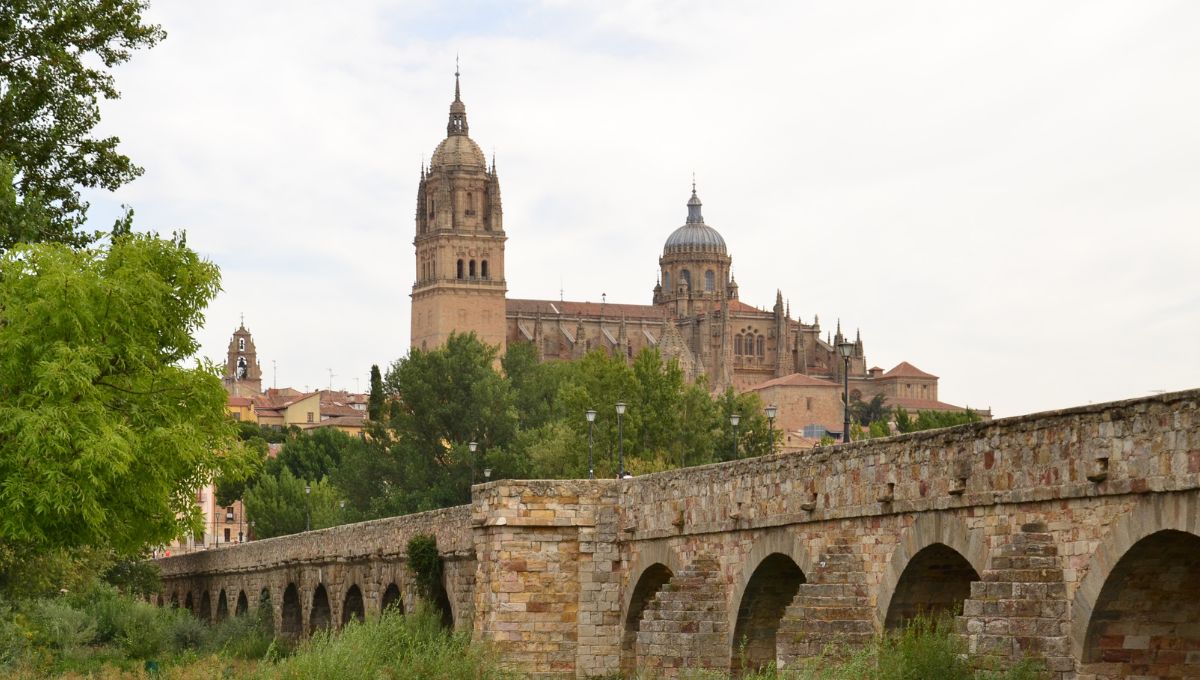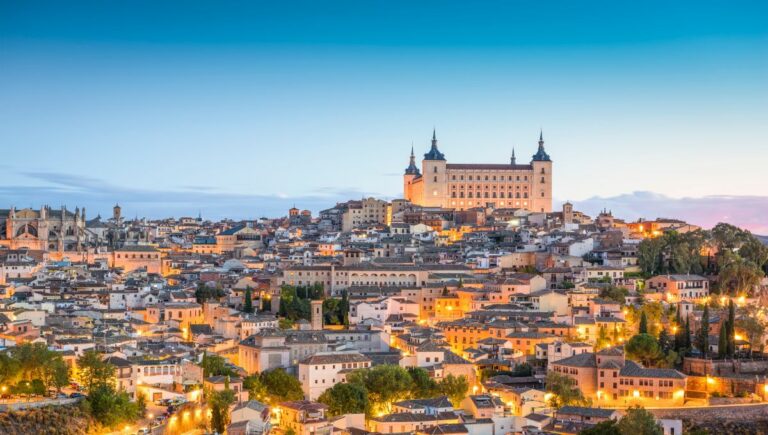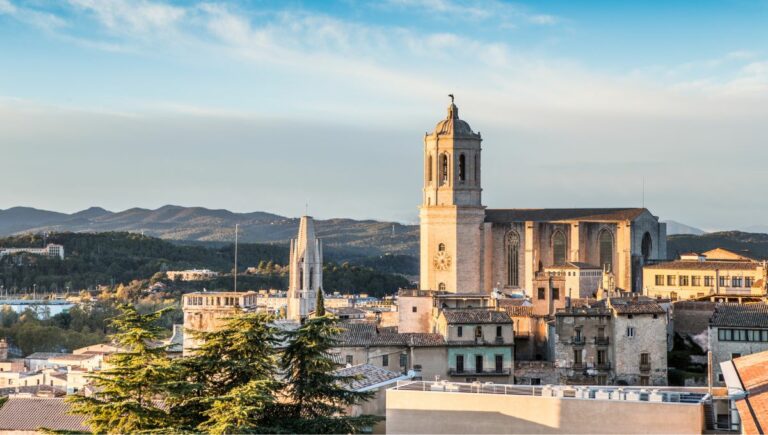Ah, Salamanca, both a city and a province! I have visited many times due to spending summers in the Sierra Francia mountains, and I never lose the wonder this city gives me as I explore the streets. Every corner turned unveils another intricate building.
The city is home to the prestigious University of Salamanca, giving it a youthful pulse while its ancient walls echo with the footsteps of students past and present. Then there’s Plaza Mayor, the city’s heart, where every corner café whispers stories of gatherings, celebrations, and everyday life played out over centuries.
Thanks to its cultural and artistic assets, this autonomous community was declared a UNESCO World Heritage Site in 1988 and the European Capital of Culture in 2002.
From my perspective, Salamanca isn’t just a place to visit; it’s a place to experience and soak in the blend of history, academia, and vibrant culture that makes this Spanish city unique.
In this Salamanca travel guide, I will draw on my countless visits to create a useful guide for you to ensure you make the most out of your time in this great Spanish city.
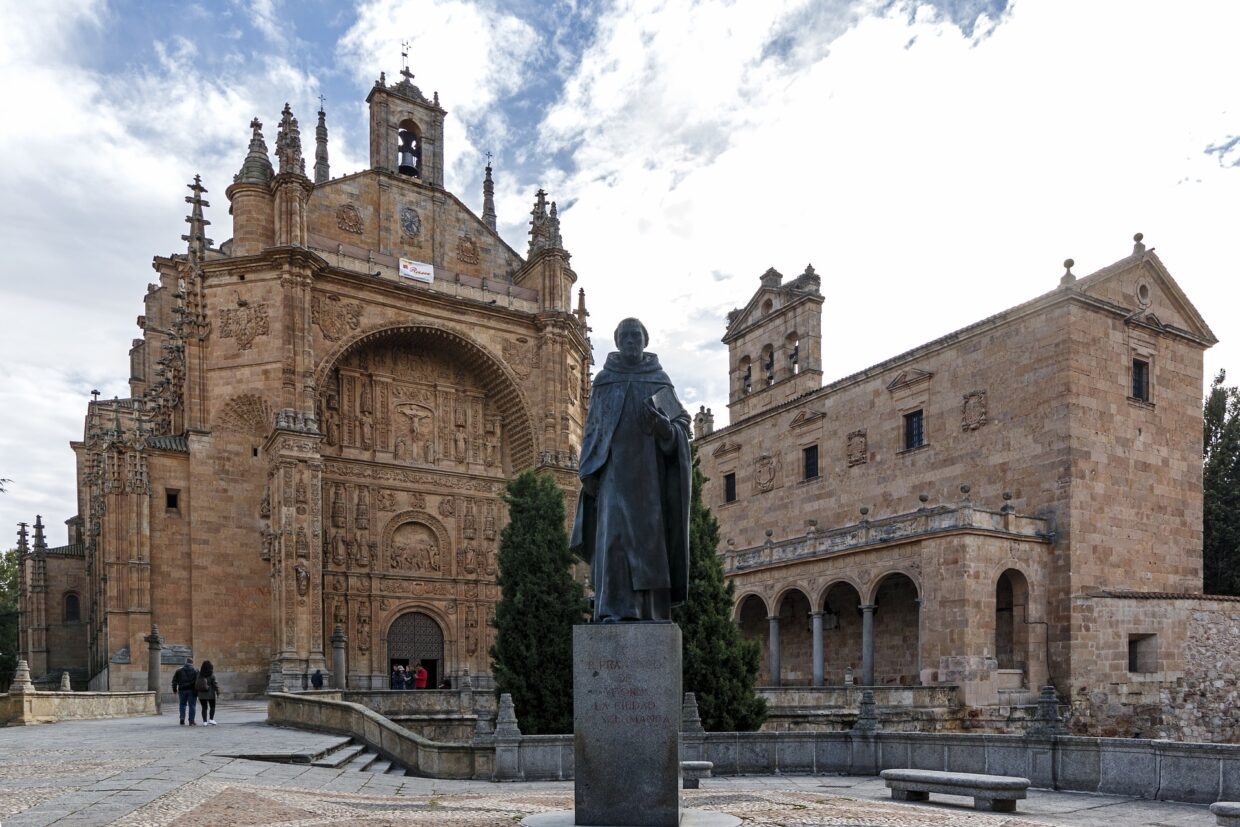
A Brief History of Salamanca
- Early Settlements and Foundation: Salamanca’s area witnessed human settlement from the beginning of the first millennium BC, evidenced by ceramic remains linked to the Las Cogotas I culture of the Final Bronze Age. The first stable and continuous human settlement, dated to the first Iron Age (7th century BC).
- Hannibal arrives: In 220 BC, Hannibal conquered the ancient city of Helmantica (Salamanca). Despite initially surrendering to avoid further damage, the inhabitants, with the hidden support of their women, managed to defeat Hannibal’s troops. However, Hannibal eventually took control, and impressed by the bravery of the women, he returned their homeland and wealth to the men.
- Roman Salamanca and Lusitania: After the Second Punic War, the Roman Empire’s expansion saw Salamanca become a vital part of the Iberian Roman province of Lusitania. This era initiated intense Romanization, focusing urban development on the “teso de las catedrales” and enhancing its strategic and commercial significance.
Key Roman legacies include the Calzada de la Plata, which shaped the city’s main urban axis and trade; the Roman Bridge, ensuring access across the Tormes River since the 1st century; and the Cerca Vieja, Salamanca’s earliest city walls that followed the layout of pre-Roman fortifications. These elements underscore Salamanca’s importance during Roman times, blending infrastructure and urban planning to foster its growth and connectivity.
- From Alans to Visigoths and Muslim Conquest: After the Western Roman Empire’s collapse, a nomadic tribe known as the Alans settled in what is now Salamanca, soon to be overtaken by the Visigoths who incorporated the city into their expanding territories. Little is recorded about Salamanca during Visigothic rule, except for significant fortification upgrades in the 4th century and its role as an episcopal see in 589.
The Muslim invasion in 712, led by Musa ibn Nusayr, marked a dramatic shift. In the tumult of early Muslim rule, Salamanca faced destruction and depopulation from ongoing conflicts, notably after Alfonso I’s assault in 754, setting the stage for its centuries-long recovery and transformation.
- Reconquista and the Middle Ages: Salamanca was reconquered by Christian forces in the 11th century. The city flourished during the Middle Ages, establishing its famous university in 1218, one of the oldest in the world. This period marked a golden age for Salamanca, becoming a centre of learning and intellectual life in Europe.
- 15th and 16th Centuries Renaissance: The city experienced significant growth and prosperity. The University of Salamanca became a leading light of the Spanish Renaissance, attracting scholars from across Europe. Magnificent buildings, including the New Cathedral and the Casa de las Conchas, were constructed during this era.
- War of Spanish Succession and Decline: The 17th and 18th centuries were challenging for Salamanca, as it suffered due to its involvement in the War of Spanish Succession. The city’s influence and wealth declined significantly during this period.
- 19th Century and Peninsular War: Salamanca was a significant battleground in the Peninsular War against Napoleon’s forces, with the Battle of Salamanca in 1812 being particularly notable. This era brought destruction and hardship but paved the way for modernization efforts in the following years.
- 20th Century to Present: The city has seen much restoration and preservation of its historic sites in the 20th and 21st centuries. Salamanca was declared a UNESCO World Heritage Site in 1988, recognizing its monumental and historic legacy. Today, it remains a vibrant city, celebrated for its university, culture, and as a popular destination for students and tourists alike.
Thigs to do in Salamanca
Monuments in Salamanca, Spain
When you visit Salamanca, you’ll be welcomed to a wide array of magnificent historical monuments on display throughout the city, including:
Universidad de Salamanca
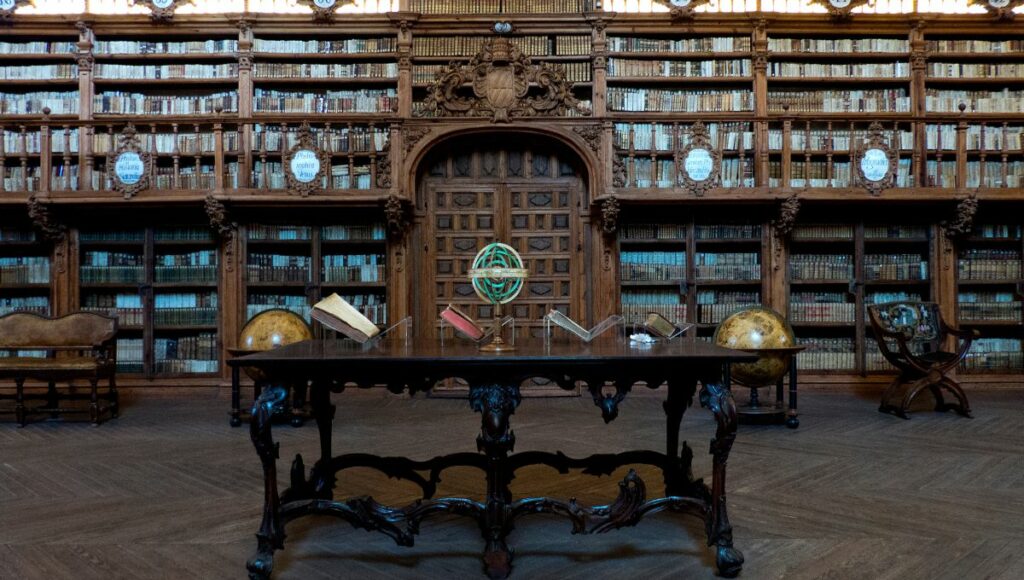
The world-famous University of Salamanca is probably the most iconic thing about the city. It was built back in 1218 during Alfonso IX’s regime making it one of the oldest universities in the world. The building has a Spanish plateresque architectural style and features Catholic symbols and other curios figures. A main attraction in the University of Salamanca is the Sala Calderón de la Barca or the library. A museum inside the University also displays fine arts, archaeology, and ethnology exhibits.
All visitors to the city must search for “la Rana de Salamanca” or “the Frog on the Skull”, a famous architectural detail found on the façade of the University of Salamanca. It’s a small carving of a frog atop a skull, situated among the ornate decorations of the university’s main entrance.
This tiny sculpture has become one of Salamanca’s most beloved symbols and you will no doubt see many frog inspired trinkets and souvenirs.
Legend has it that finding the frog among the intricate carvings brings good luck and guarantees success in exams to university students. The true origin of the frog’s symbolism is uncertain, with various interpretations ranging from representing the sin of lust to a simple challenge for students to find it among the detailed façade as a symbol of attentiveness.
Cathedral of Salamanca
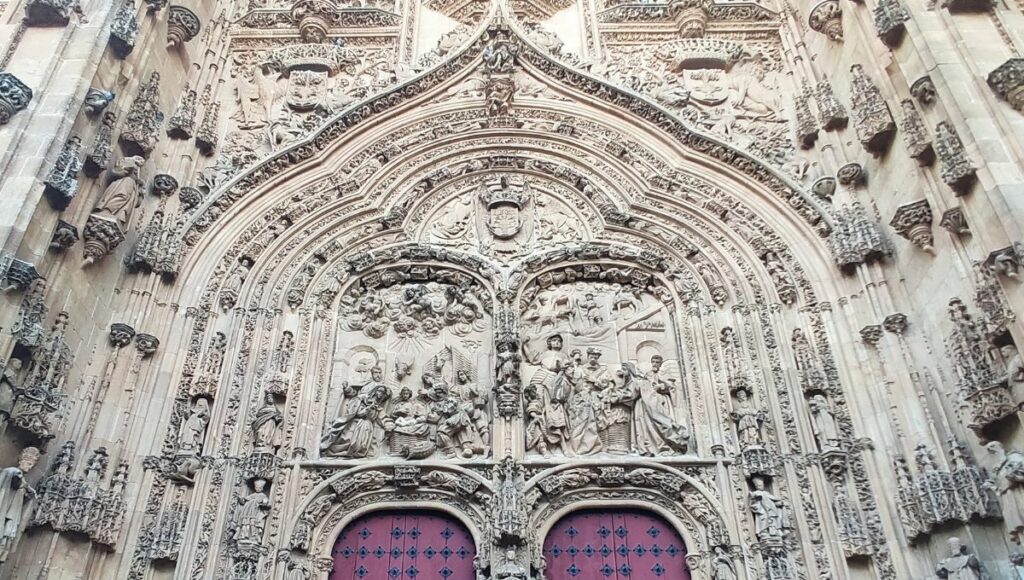
The Salamanca cathedral consists of two cathedrals. Catedral Vieja or the old cathedral Salamanca is the oldest Christian monument in the city. This 12th-century Romanesque structure has a 328 feet (110-meter) tall clock tower, which features Europe’s oldest organs and 15th-century biblical scene paintings. Catedral Nueva, or the new cathedral, was constructed in the early 16th century. The cathedral’s grandeur is due to the combination of Baroque, Gothic, and Renaissance architectural styles.
One thing to look out for is the spaceman! Yep, an astronaut carved into the façade of the New Cathedral.
The spaceman was added during restoration work in the 1990s. The inclusion of the spaceman, along with other contemporary figures, was the idea of the restorers. It’s meant to follow a tradition of medieval cathedrals incorporating modern symbols into their designs to “sign” their work or reflect contemporary life. The spaceman symbolizes the 20th century, capturing the era’s fascination with space exploration and science fiction.
Casa de las Conchas
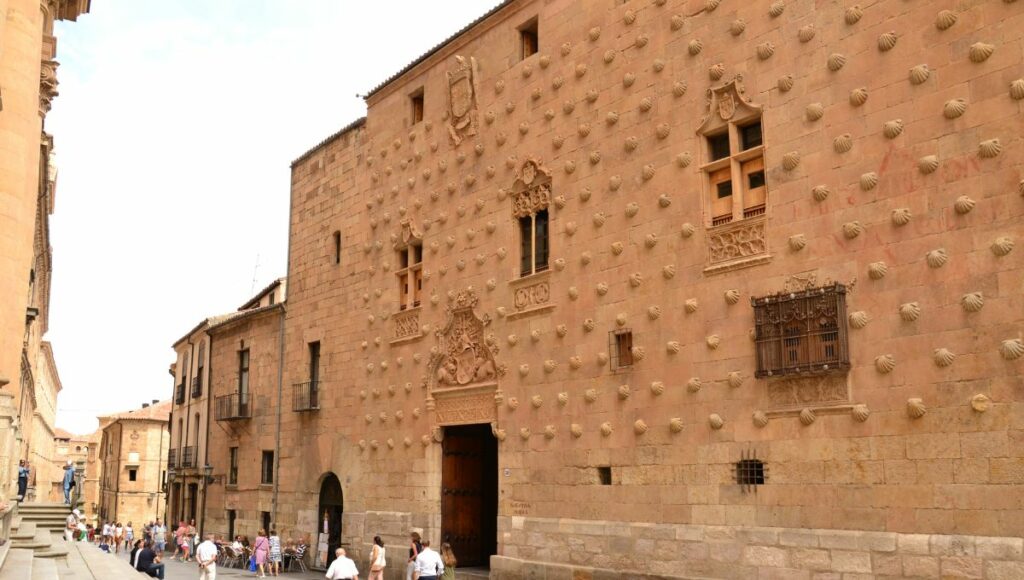
The Casa de las Conchas, or House of Shells, is a unique historical building in Salamanca, known for its distinctive façade adorned with over 300 scallop shells, a symbol of the Santiago Order and pilgrims. Constructed in the late 15th century, this building is a prime example of the Gothic style with Renaissance elements.
Beyond the shells, the façade features elements like the coat of arms of the Catholic Monarchs and the Maldonado family, the original owners, offering insights into the political and social alliances of the era.
Inside, the Casa de las Conchas boasts a beautiful Renaissance courtyard, a common feature in Spanish noble houses of the period, providing a tranquil oasis in the heart of the city and serves as a public library, making it a place of learning and cultural exchange, much like it would have been centuries ago.
Like many historical buildings, the Casa de las Conchas is surrounded by legends, including hidden treasures beneath its shells and secret tunnels connecting to other significant buildings in Salamanca.
Activities in Salamanca Spain
Stroll in Salamanca’s Old City
The old city is the historic center of Salamanca. Here, you’ll find some of the most important Baroque, Gothic, Moorish, Renaissance, and Romanesque monuments of the city. A simple stroll will give you aesthetic pleasure.
Wander Around Plaza Mayor
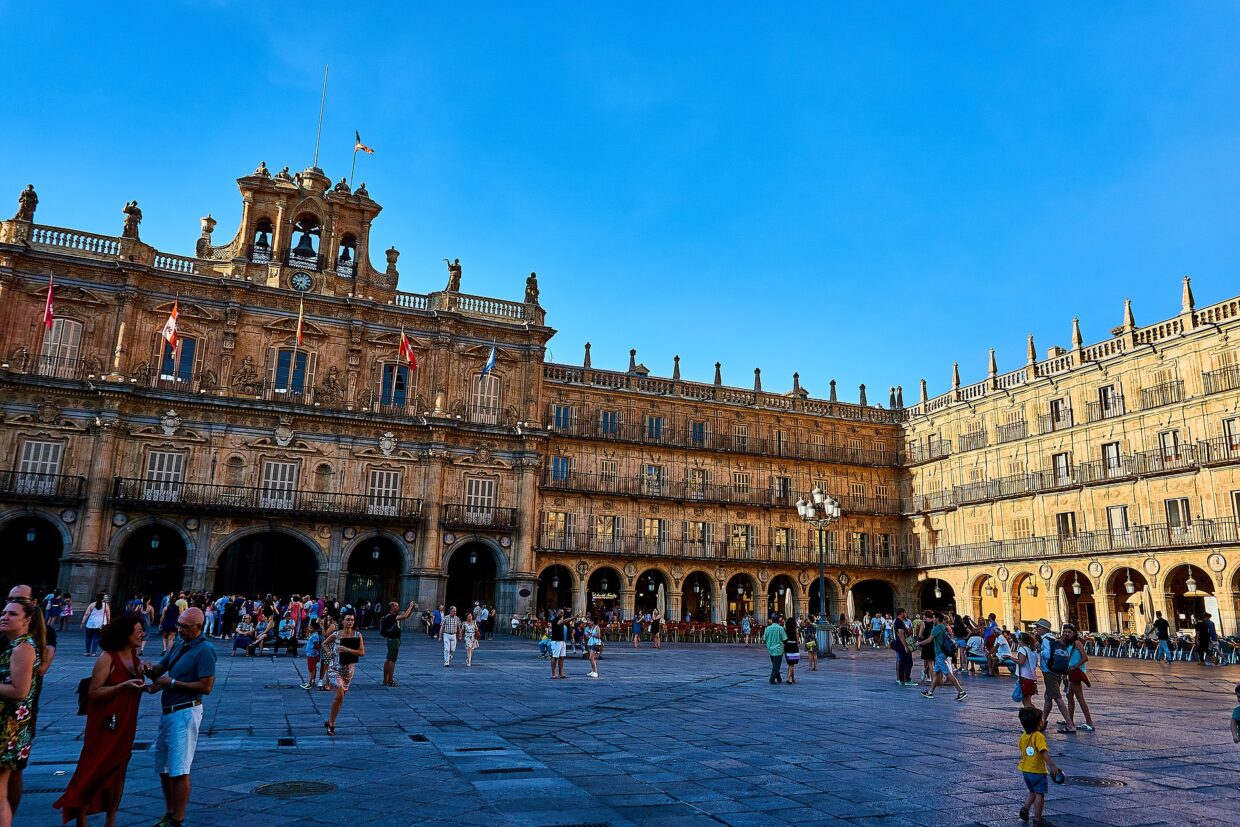
Soak in the Spanish architecture as you walk through Plaza Mayor. This town square in Salamanca, Spain, is comprised of three-story buildings with a similar Baroque architectural style. It used to be a venue for ceremonial occasions and bullfights but is now filled with small shops, cafes, and restaurants.
Cross the Roman Bridge
Offering panoramic views of the city and the Tormes River, the Roman Bridge is a testament to Salamanca’s ancient history, dating back to the 1st century AD.
Museums in Salamanca, Spain
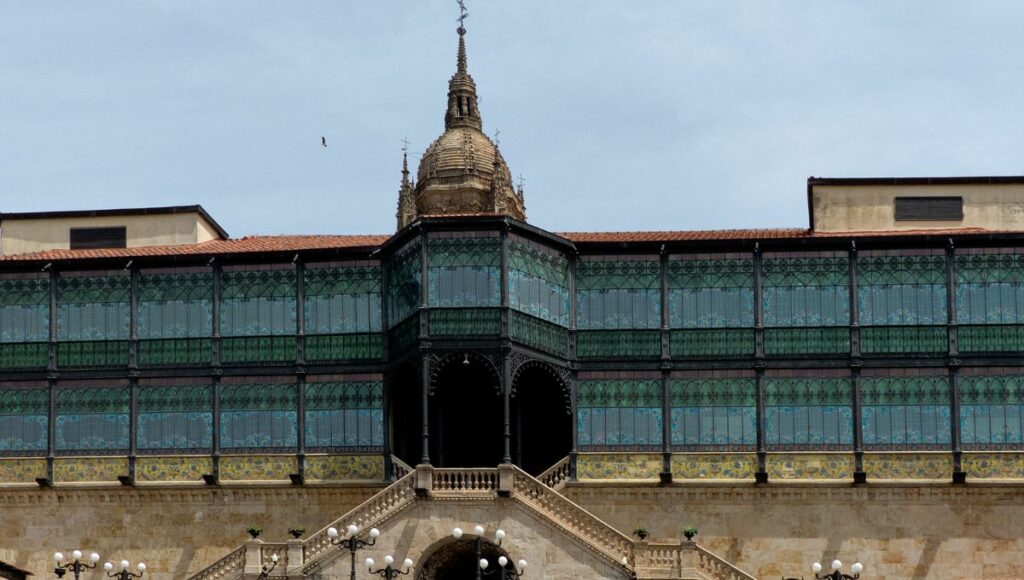
Dig deeper into the city’s ancient times by including a museum visit in your “things to do list.” Here are some of my top picks:
Museo Art Nouveau y Deco
One of the most renowned museums in the regions of Spain is the Museo Art Nouveau y Deco. This museum contains art collections from the 19th and 20th centuries. Thanks to the building’s intricate glassworks, the museum is known to have one of Spain’s most remarkable architectural constructions.
- For more information, visit their website here.
Museo Taurino
Bullfights have always been a part of Salamanca’s culture. To recognize this heritage, Museo Taurino, or the Bullfight Museum was established. Learn more about this quintessentially Spanish sport through the museum’s collection.
- Visit their website here.
Museo de Historia de la Automoción de Salamanca
The Museum of Automotive History is home to a distinct collection of antique vehicles and memorabilia. It also features other exhibits related to early attempts at auto manufacturing to the evolution of car technology. Over 100 vehicles and other automobile-related objects are on display here.
- For more information, visit their website here.
Festivals in Salamanca, Spain
An exciting part of Salamanca tours is joining various festivals that are held throughout the year.
Feria de Salamanca
The Salamanca Fair held every 8th of September is one of the most popular events in Salamanca. This festival honors the Patron Saint, la Virgen de la Vega. It involves a week of feasting, concerts, dances in traditional costumes, bullfights, and fireworks displays.
El Carnaval del Toro
El Carnaval del Toro is a festival dedicated to bullfighting. It originated in Ciudad Rodrigo and is celebrated every February since the 14th century. It makes this one of the oldest festivals in Spain.
Semana Santa de Salamanca
The most important religious event in Salamanca is Semana Santa, which usually occurs in March or April. During this event, the streets are filled with beautiful processions carrying carvings representing the Passion of Christ. Every Holy Thursday, a breakfast of hot chocolate and cakes are served.
Shopping in Salamanca, Spain
Habitual shoppers won’t be disappointed in Salamanca as the shopping scene reflects its culture: a blend of the old and the new, where every corner offers something different. Its bustling streets lined are with shops that cater to all tastes and budgets, from high-end brands and high street classics such as Ale-Hop to unique souvenirs stores, there’s plenty for you to enjoy.
Calle Meléndez and Plaza Mayor
The heart of Salamanca’s shopping district beats strongest around Calle Meléndez and the iconic Plaza Mayor. Here, top-brand stores offer fashion, accessories, and more. The area’s historical ambience and a wide selection of shops make for an enjoyable shopping experience.
Calle Toro and Calle Zamora
Calle Toro and Calle Zamora are must-visit streets for those searching for souvenirs and speciality items. These thoroughfares are home to various shops selling everything from traditional Spanish ceramics to contemporary fashion and handmade crafts.
Shopping Centers
While Salamanca cherishes its traditional shopping streets, it also boasts modern shopping centres that provide a wide range of options under one roof.
- El Tormes Shopping Center: Situated on the city’s outskirts, this mall offers a vast selection of international and Spanish brands, a supermarket, restaurants, and cinemas, making it a perfect spot for a day out.
- Vialia Salamanca: Located near the train station, Vialia combines shopping with leisure, featuring clothing stores, electronic shops, eateries, and a multiplex cinema.
- Centro Comercial Los Cipreses: This shopping centre caters to a more local taste, with various shops, boutiques, and services. It’s a great place to explore for those looking to experience shopping like a local.
Markets and Artisan Shops
For a more traditional experience, the Mercado Central de Salamanca (Central Market) offers fresh produce, meats, cheeses, and other local goods. Additionally, artisan shops throughout the city provide handmade items perfect for unique gifts or personal keepsakes.
Places to Stay in Salamanca, Spain
Hoteles en Salamanca Centro or hotels in the historic center of Salamanca is the recommended accommodation since this location is near the city’s main interest points. Suggested city center hotels include:
- Salamanca Hospes Palacio de San Esteban
- Soho Boutique Canalejas
- Hotel Ibis Salamanca
- Hotel Rector Salamanca
Restaurants to Eat in Salamanca, Spain
Salamanca, a city that marries the rich tapestry of Spanish history with culinary delights, offers an array of traditional dishes that reflect its cultural heritage. Among these, Hornazo, a savory meat pie filled with pork, chorizo, and hard-boiled eggs, stands out as a local favorite, particularly enjoyed during Easter. Paloma, another traditional delicacy, consists of a fried wheat crust encasing a delectable Russian salad, offering a unique taste of Salamanca’s culinary diversity. For those with a sweet tooth, the Doughnuts of Ledesma and Perrunillas, traditional Christmas cookies, provide a delightful end to any meal.
When it comes to dining out, Salamanca boasts a variety of restaurants that cater to every palate, combining traditional flavours with contemporary dining experiences. Here are four recommendations for those seeking to indulge in the city’s gastronomic offerings:
- Don Mauro: Located near the bustling Plaza Mayor, Don Mauro is a favourite for locals and visitors, offering a wide range of Spanish dishes with a modern twist. Its cozy ambiance and friendly service make it a perfect spot for a leisurely meal.
- La Fonda del Arcediano de Medina: This restaurant, set in a beautifully restored historic building, offers a dive into traditional Spanish cuisine, serving dishes made from local ingredients that tell the story of Salamanca’s culinary history.
- La Posada: Known for its charming atmosphere and excellent tapas, La Posada provides a casual dining experience embodying the spirit of Spanish cuisine. It’s a great place to enjoy a variety of flavours in one sitting.
- Casa de Comidas Montero: For those looking to explore Salamanca’s tapas scene, Casa de Comidas Montero offers a delightful array of options. With its focus on quality and innovation, this restaurant is a must-visit for tapas enthusiasts.
Each of these establishments not only offers a taste of Salamanca’s traditional dishes but also provides a window into the city’s vibrant culinary culture, making them ideal stops during your visit.
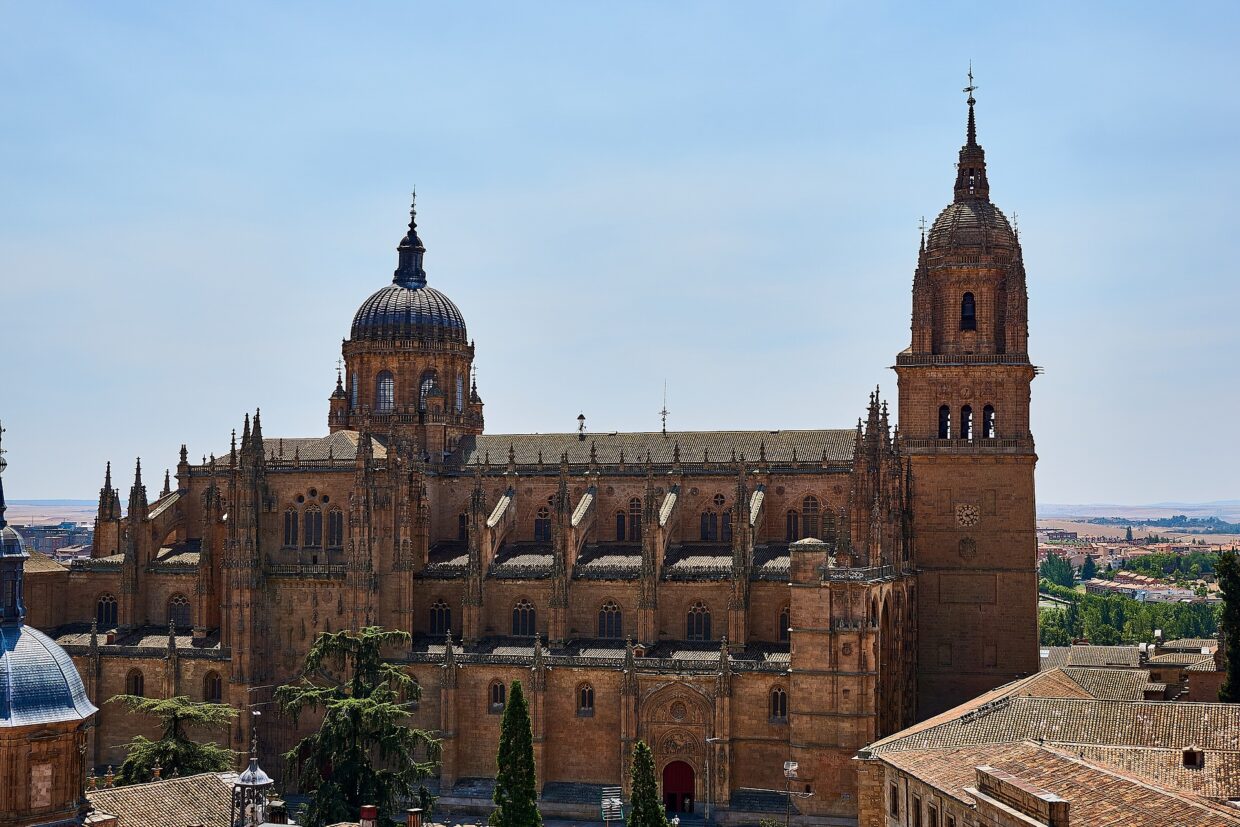
Drinking and Nightlife in Salamanca, Spain
Salamanca’s nightlife pulsates with energy, offering a lively scene that caters to its vibrant student population and visitors alike. The city’s bars, traditionally open until the early hours of around 4 am, are the backbone of its nocturnal activities.
Iconic spots like Gran Café Moderno and El Puerto de Chus, nestled in the Gran Vía area, have been long-standing favourites, providing a blend of traditional charm and contemporary entertainment. These venues are perfect for soaking in the local ambience over drinks.
Salamanca’s Bordadores district is the place to be for the club-goers, housing popular clubs such as Camelot and Cvm Lavde. These spots come alive at night, offering diverse music genres and vibrant dance floors where locals and tourists merge to celebrate Salamanca’s infectious nightlife.
Beyond the dance clubs, the city’s bars and pubs offer a more relaxed atmosphere, ideal for enjoying a glass of the region’s renowned wine or a cold cerveza. Whether you’re in the mood for a lively night out dancing or a cosy spot to enjoy conversations over drinks, Salamanca’s nightlife scene provides an enticing mix of options to ensure memorable evenings.
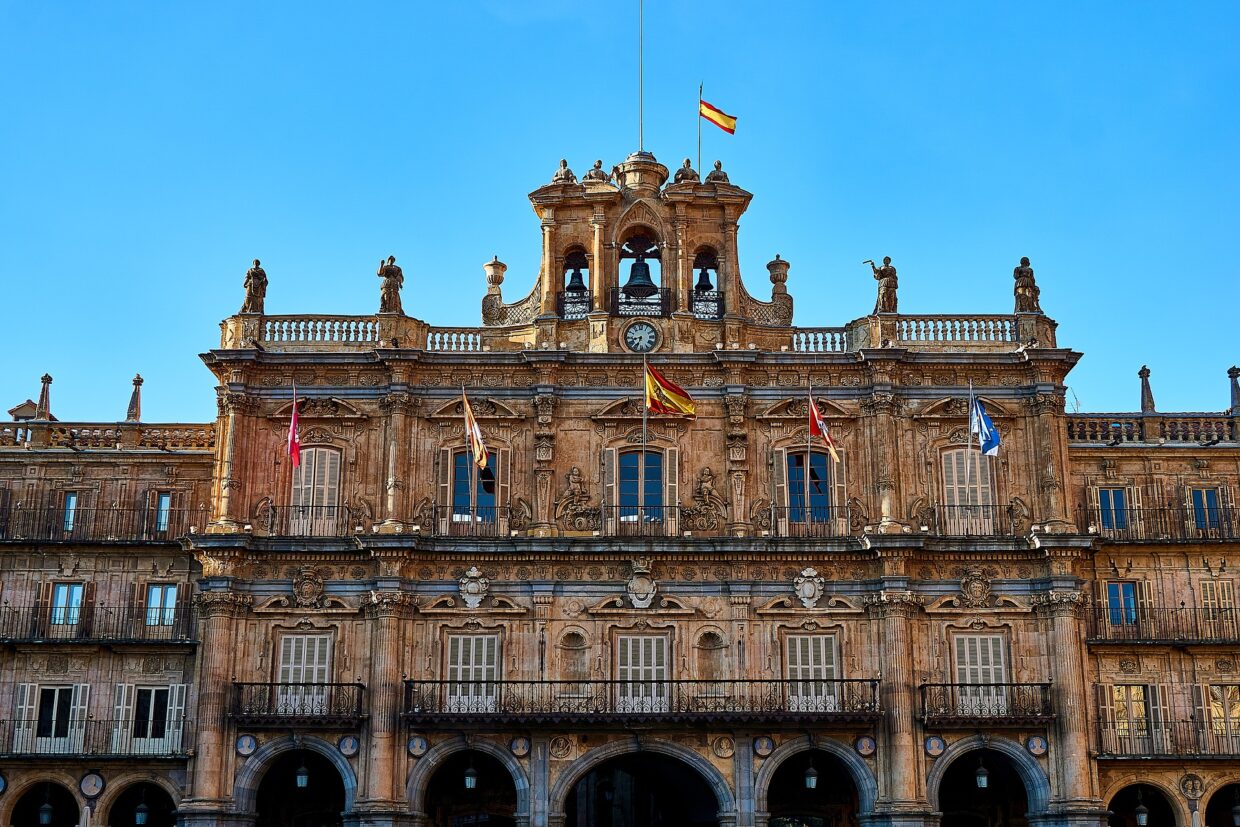
Day Trips from Salamanca, Spain
Salamanca is an ideal base for visiting other Spanish cities and countryside. Here are some places I have visited during my time in the area that I would highly recommend if you have a bit of extra time.
Avila
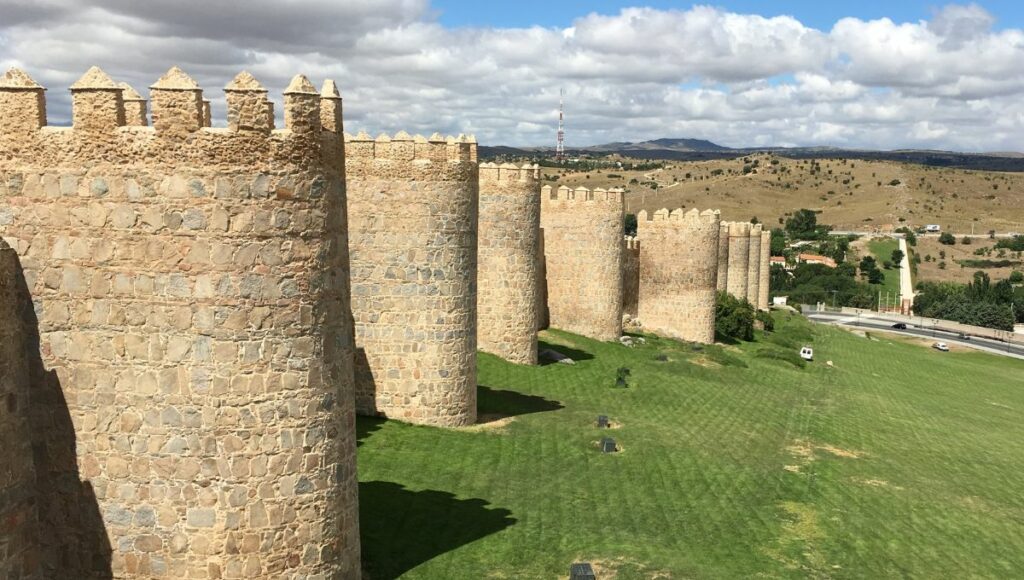
Located approximately 90 kilometers east of Salamanca, Avila is easily accessible by car, bus, or train, offering flexible options for travelers. The drive along the A-50 motorway is straightforward and takes about an hour, providing scenic views of the Castilian countryside. Alternatively, regular bus services connect Salamanca and Avila, offering a convenient way to travel between the two cities.
Once in Avila, visitors are greeted by the city’s most iconic feature: its magnificent walls. Dating back to the 11th century, these ancient fortifications encircle the old town, offering panoramic views of the surrounding landscape from their walkable ramparts. Avila’s historic center, a UNESCO World Heritage Site, is a treasure trove of Romanesque and Gothic churches integrated into the city walls, including the striking Avila Cathedral.
Zamora
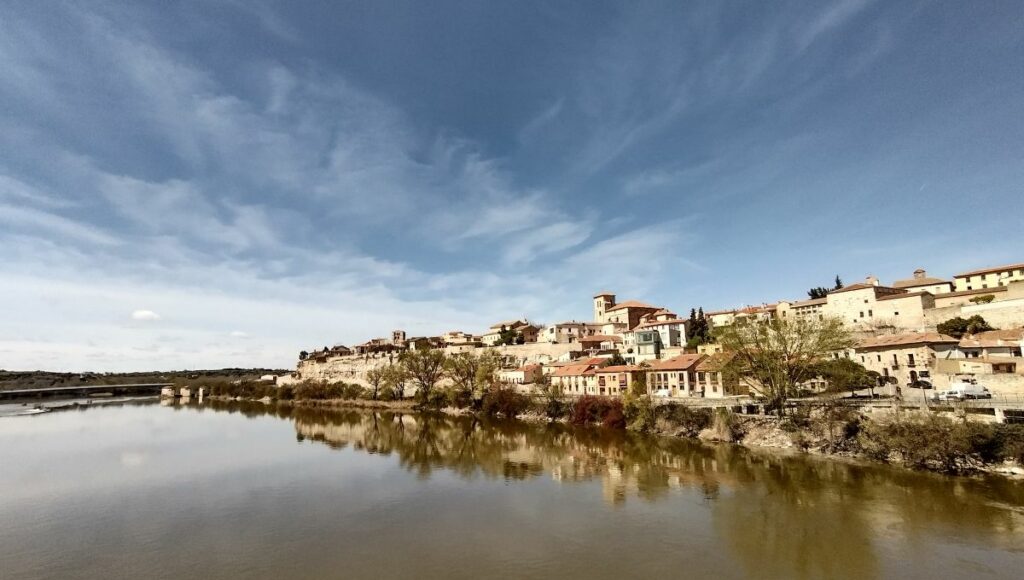
Conveniently reachable by train or bus, with travel times averaging around 90 minutes, Zamora stands out as a hassle-free destination for explorers. Renfe’s trains and buses from companies like Avanza provide frequent services, making the city’s historic heart easily accessible upon arrival.
Zamora, dubbed the “museum city of Romanesque art,” captivates visitors with its array of over two dozen Romanesque churches, including the iconic Cathedral of Zamora, known for its distinctive dome.
The Castle of Zamora, perched high with views over the Duero River, and the city’s ancient walls encapsulate centuries of history. Travellers can immerse themselves in the local culture and history by strolling through the old town’s narrow lanes or sampling regional specialities at the Mercado de Abastos. This combination of straightforward access, stunning historical sites, and a tranquil pace makes Zamora an enriching complement to any Salamanca itinerary, appealing to those intrigued by Spain’s rich heritage.
Toro
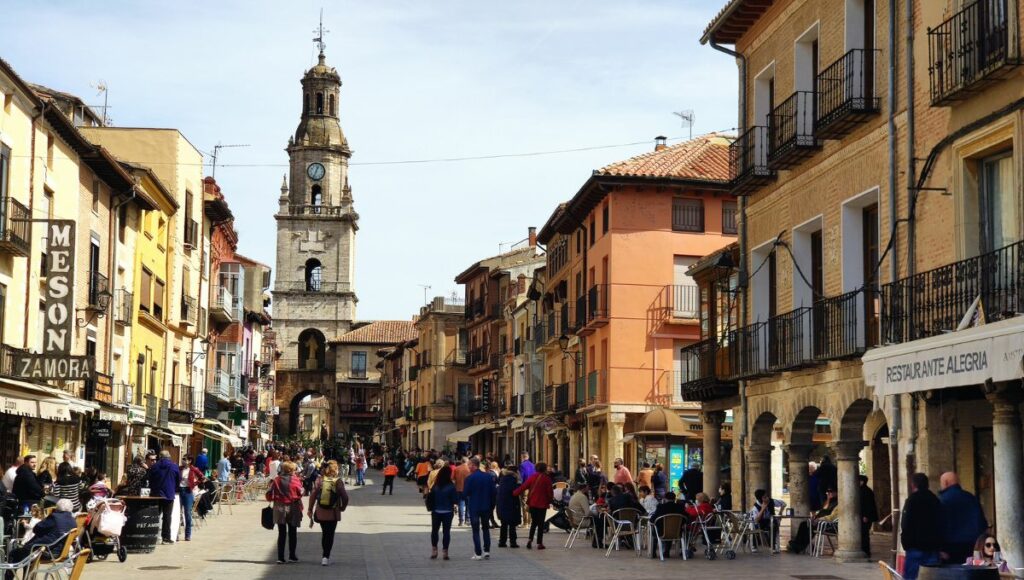
Venturing from Salamanca to Toro offers a delightful excursion into the heart of Spanish wine country, known for its robust and esteemed wines. Easily accessible, Toro is a short journey away, with options to travel by bus or car. The scenic drive or ride through the Castilian countryside provides a prelude to Toro’s charm, making the trip as enjoyable as the destination itself.
Once in Toro, visitors are greeted by the city’s rich history and viticulture. The Colegiata de Santa María la Mayor, a stunning example of Romanesque architecture, dominates the town’s skyline, offering insights into Toro’s medieval past. Not to be overlooked, the wine is the real highlight here. Toro’s vineyards are famed for producing deep, complex red wines that have garnered international acclaim.
A visit to one of the many bodegas dotting the landscape allows for tastings and tours, offering a firsthand look at the winemaking process that has been refined over centuries. Whether you’re a seasoned oenophile or simply curious about Spanish wines, Toro provides an enriching day trip from Salamanca that combines cultural heritage with the pleasures of the vine.
Villages of the Sierra Francia
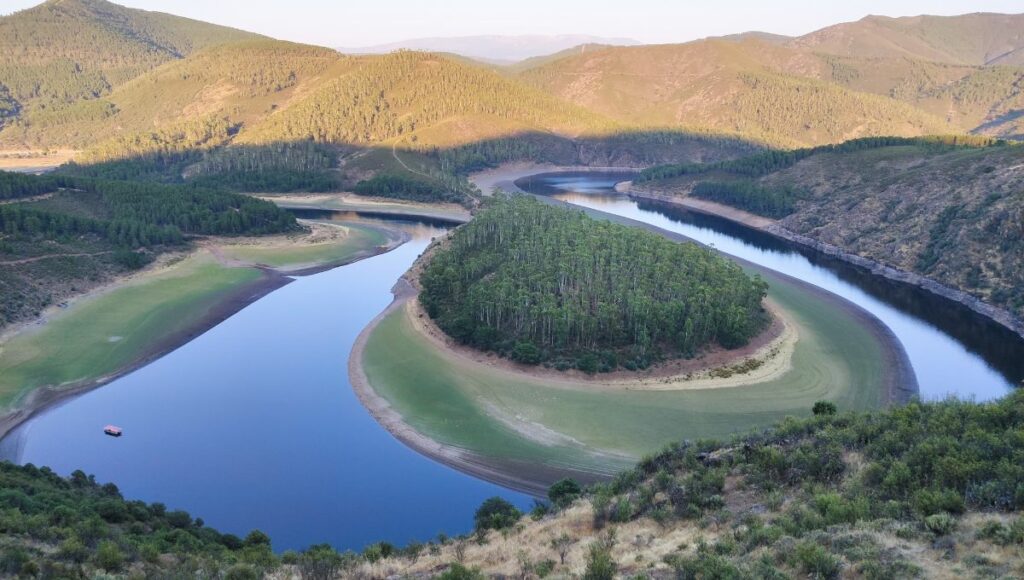
The Sierra de Francia is a mountain range located in the province of Salamanca, part of the larger Sistema Central. It’s known for its lush landscapes, rich biodiversity, and picturesque villages that offer a glimpse into traditional Spanish life. A trip to the Sierra de Francia from Salamanca presents a perfect opportunity to explore rural Spain, enjoy nature, and discover historical architecture. Here are a few villages that are well worth a visit:
- La Alberca: This charming village is famous for its well-preserved medieval architecture, cobbled streets, and traditional half-timbered houses. La Alberca was the first rural village in Spain to be declared a National Historic Monument. Visitors can enjoy local artisan shops, traditional restaurants, and beautiful natural surroundings.
- Miranda del Castañar: Enclosed by walls from the 12th century, this village offers stunning views of the Sierra de Francia. Its castle, originally from the 14th century, and the historic bullring, unique for its square shape, are must-see attractions.
- Mogarraz: Known for its unique charm and narrow streets lined with houses displaying portraits of residents taken in the 1960s by a local photographer. This initiative has turned the village into an open-air museum, creating a poignant connection between past and present inhabitants.
- San Martín del Castañar: A small village where time seems to have stood still. Its castle, now partially restored as a cultural center, and the Romanesque church are highlights. The village is also a gateway to several hiking trails that wind through the Sierra de Francia.
La Pena de Francia
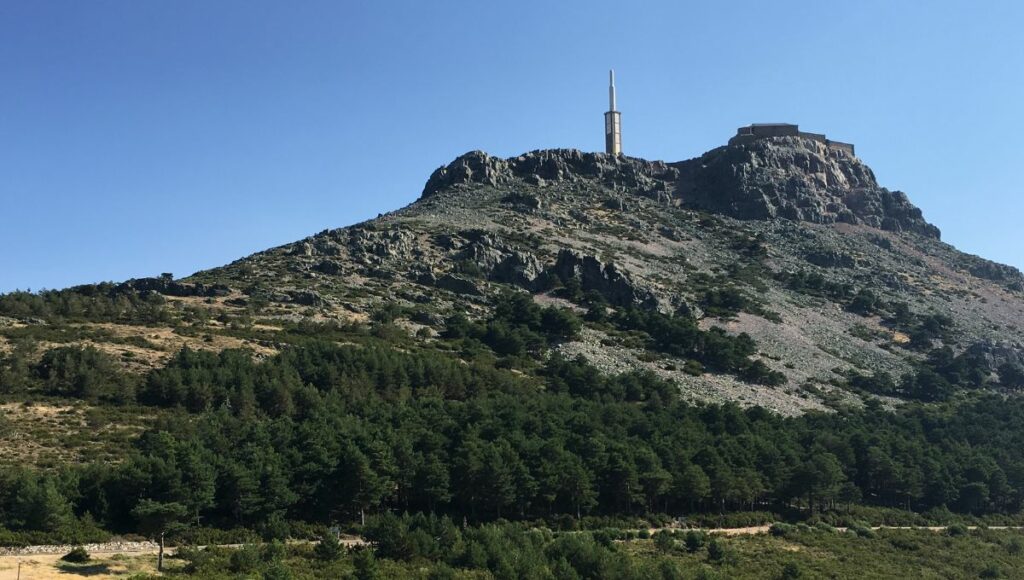
La Peña de Francia is a significant and revered destination located in the Sierra de Francia, about 70 kilometres from Salamanca. This makes it an ideal day trip spot, offering spiritual solace and natural beauty. Getting there is straightforward by car, following the SA-201 from Salamanca through the beautiful countryside until you reach the base of this majestic mountain. The road is scenic, winding through lush landscapes and quaint villages, offering a glimpse into rural Spanish life. For those without a car, some local tour operators offer day trips to La Peña de Francia, which can include guided tours and transportation.
At an elevation of 1,723 meters, La Peña de Francia hosts a 15th-century monastery and the Black Madonna shrine, attracting pilgrims and tourists alike. The panoramic views from the top, overlooking the provinces of Salamanca and Cáceres, are breathtaking. Visitors can explore the sanctuary, enjoy the serene atmosphere of the mountain, or venture into the surrounding natural park, rich in flora and fauna. Whether you’re interested in religious history, hiking, or simply soaking in spectacular views, La Peña de Francia offers diverse activities that cater to many interests, making it a worthwhile day trip from Salamanca.
Arribes del Duero
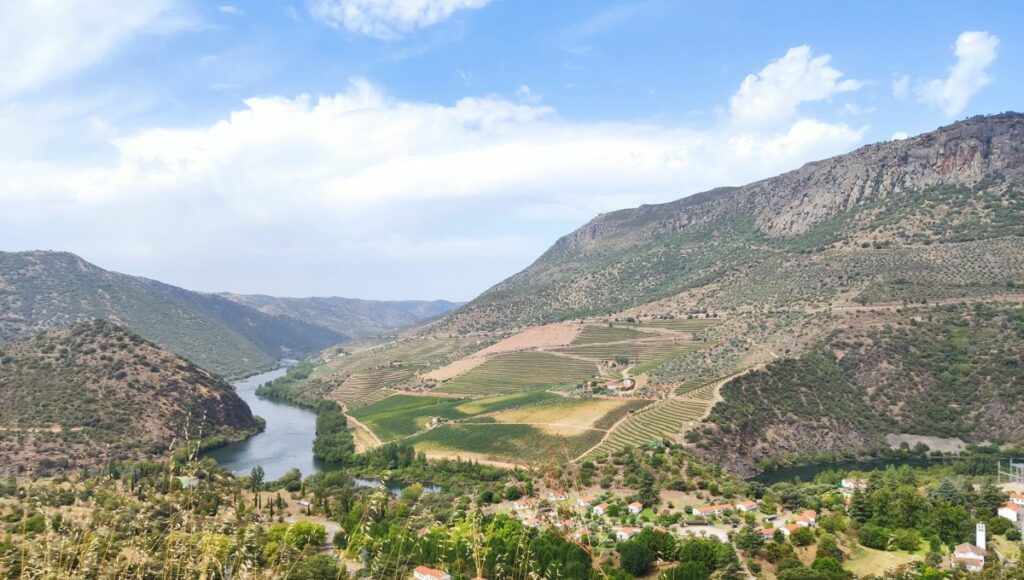
Exploring Arribes del Duero from Salamanca presents an enticing day trip for nature lovers and cultural enthusiasts alike. This natural area, defined by the dramatic canyons carved by the Duero River as it snakes along the Spanish-Portuguese border, is accessible by car or organized tours from Salamanca. The drive itself, spanning approximately two to two and a half hours, offers scenic views and leads to one of Spain’s most breathtaking landscapes. For those without a car, several local tour operators offer day trips to Arribes del Duero, providing not only transport but also guided insights into the area’s natural and cultural significance.
Key highlights of Arribes del Duero that captivate visitors include its stunning viewpoints, such as the Mirador del Fraile, offering panoramic views of the river and its gorges. The area is also renowned for its rich biodiversity, particularly the birds of prey, such as the golden eagle and the peregrine falcon, making it a haven for bird watchers. Cultural gems are scattered throughout, including small traditional villages and ancient vineyards where visitors can sample the local wine varieties characteristic of this region. Whether you’re drawn to its natural beauty, wildlife, or the allure of secluded rural life, Arribes del Duero offers a compelling escape into one of Spain’s most captivating landscapes.
Where is Salamanca located in Spain?
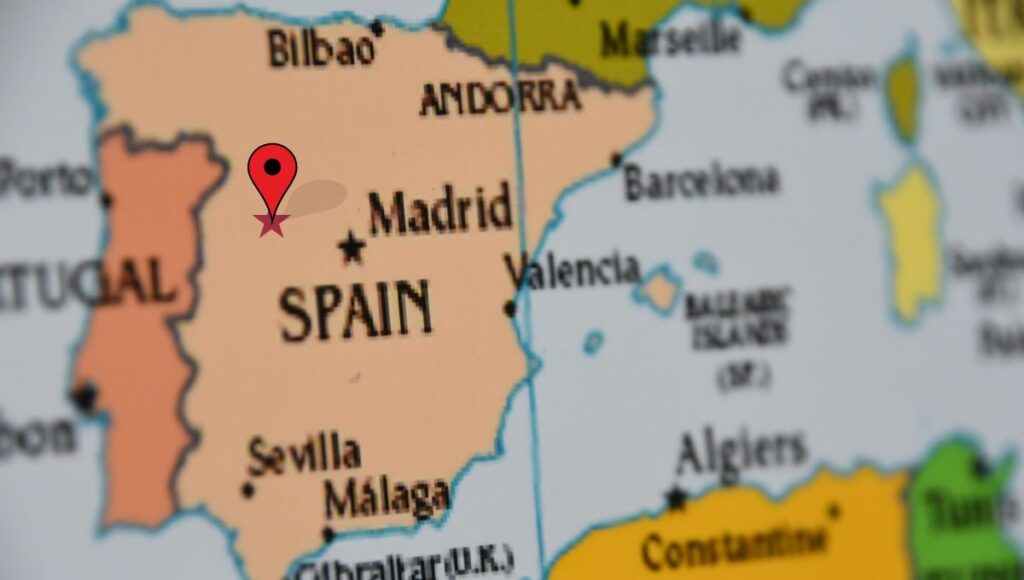
Salamanca is located in the western part of Spain, within the autonomous community of Castile and León. It is known for its beautiful historic center, the University of Salamanca (one of the oldest universities in the world), and its vibrant cultural life. To give you a sense of its location relative to other major cities in Spain:
- From Madrid: Salamanca is approximately 212 kilometres (about 132 miles) northwest of Madrid, the capital city of Spain. This distance makes it roughly a 2 to 2.5-hour drive via the A-50 and AP-6 motorways.
- From Valladolid: It is around 116 kilometres (about 72 miles) southwest of Valladolid, another major city in the Castile and León region. The journey by car via the A-62 motorway can take about 1 hour and 15 minutes.
- From Porto (Portugal): Although not a Spanish city, Porto is a significant nearby city in Portugal, located approximately 350 kilometres (about 217 miles) west of Salamanca. The drive can take around 3.5 hours via the A-62 motorway, highlighting Salamanca’s proximity to the Portuguese border.
- From Seville: Salamanca is about 460 kilometres (about 286 miles) north of Seville, one of the major cities in southern Spain. By car, the journey via the A-66 motorway takes approximately 4 to 5 hours.
- From Barcelona: Located in the northeast of Spain, Barcelona is approximately 850 kilometres (about 528 miles) from Salamanca. The drive, primarily via the A-2 and AP-2 motorways, can take around 8 hours.
How to Get to Salamanca, Spain
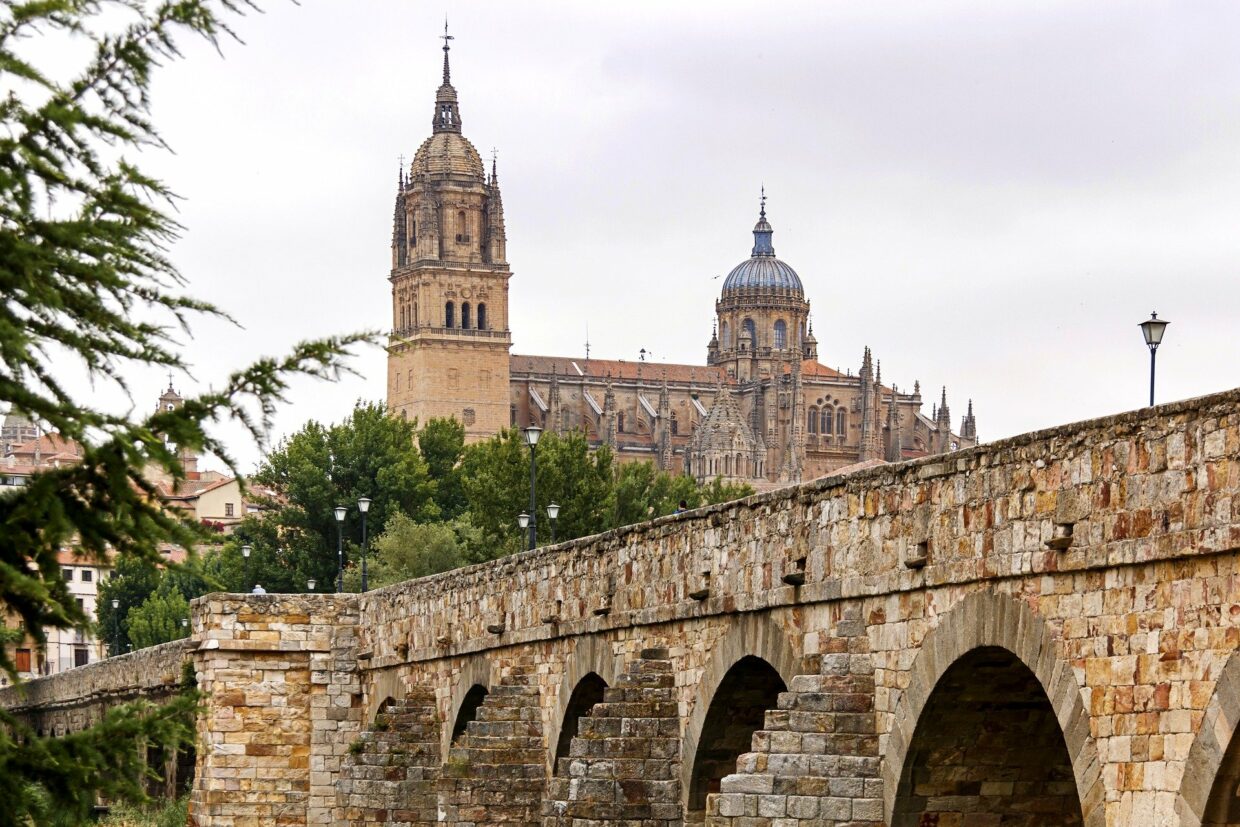
Salamanca is accessible through various means of transportation, depending on your origin and preferences. Below are the best options for getting there:
Drive
Driving to Salamanca offers flexibility and the chance to enjoy scenic routes. Major highways connect Salamanca to Madrid (A-50), Valladolid (A-62), and Portugal (A-62). You may need to pay tolls, but this can be done easily through your window with a card or cash. Parking in the city is plentiful, with both street parking and several public parking lots available.
Train
Renfe, Spain’s national railway company, operates direct trains to Salamanca from Madrid’s Estación de Chamartín. The journey can take as little as 1 hour and 30 minutes, making it a fast and convenient option. Salamanca’s train station is conveniently close to the city centre, allowing easy access to major attractions. Train schedules and tickets are available on Renfe’s website, with multiple departures daily.
Bus
Companies such as Avanza offer regular services from Madrid’s Estación Sur to Salamanca for those preferring to travel by bus. The journey typically lasts around 2 hours and 30 minutes. Salamanca’s bus station is located East of the city, about a 10-minute walk from the centre, making it easy to transition from travel to exploring. Buses run frequently throughout the day.
Flying
Salamanca Matacan Airport is a small airport about 15 km outside the city. But, the chances are you won’t get there. It accommodates very few domestic flights, making it a non-viable option for pretty much any traveller. Madrid-Barajas Airport is the nearest major airport, about three hours away by road. From Madrid, you can easily continue your journey to Salamanca by bus, train, or car rental. alternatively look for flights to Valladolid or possibly even Porto.
Salamanca Climate
The average Salamanca weather consists of short and warm summers and frigid and windy winters. The Salamanca temperature over the year usually ranges from -1°C (31°F) to 30°C (86°F).
The Salamanca, Spain weather and climate are relatively dry in spring, and showers clear fast. Meanwhile, the weather in Salamanca, Spain, during summer is scorching hot and can even be between 35°C (95°F) up to 40°C (104°F).
The Salamanca Turismo boosts during autumn as the fresh breezes attract more tourists to the city. Frosty weather and snow are unusual during winter, but the Salamanca weather in Spain is frigid.
Final Thoughts on Our Salamanca Guide
Salamanca, with its blend of monumental history, vibrant academic life, and rich culinary and nightlife scenes, offers an unforgettable experience for travellers. Salamanca caters to all senses, from wandering through the ancient streets lined with Gothic and Romanesque masterpieces to indulging in the city’s gastronomic delights and lively nightlife. The city’s unique charm lies in its ability to weave centuries-old traditions with its student population’s dynamism, creating an enriching and exhilarating atmosphere.
Whether you’re exploring the historic University of Salamanca, enjoying a leisurely meal at one of the recommended restaurants, or dancing the night away in the Bordadores district, there’s no shortage of experiences to be had. Each corner of Salamanca tells a story, offering visitors a chance to immerse themselves in Spain’s rich cultural tapestry.
Feel free to bookmark this page to ensure you have all the information you need for an unforgettable journey to Salamanca at your fingertips. And if you’ve discovered a hidden gem in Salamanca that we haven’t covered, we’d love to hear from you. Share your own “do not miss” recommendations and help fellow travellers make the most of their visit to this extraordinary city. Let’s continue to explore and celebrate the endless wonders Salamanca has to offer.

